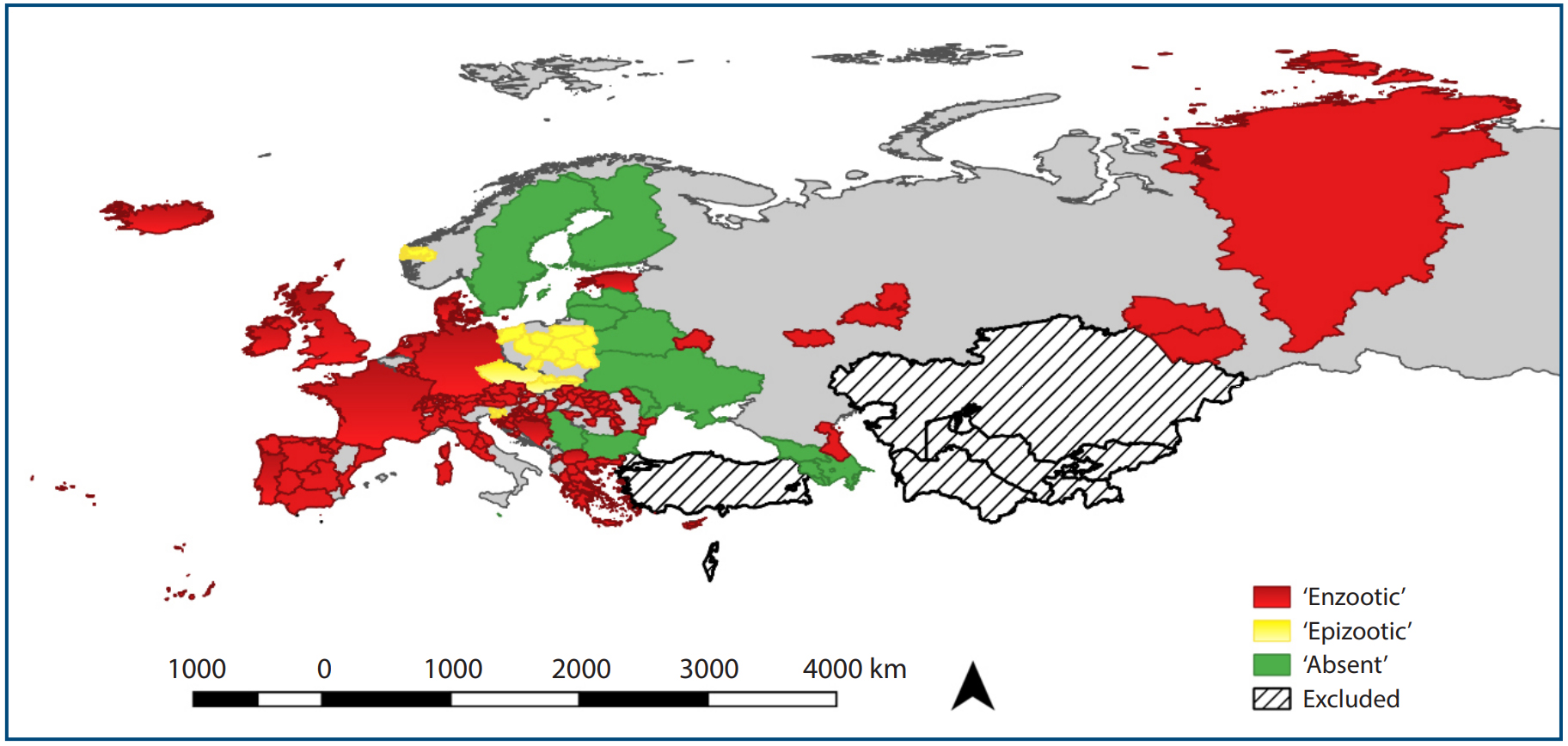Angela Fanelli, from the Department of Veterinary Sciences, University of Turin, Italy and three colleagues review the paratuberculosis situation in Europe from 2010 to 2017 using reports submitted to the O.I.E. (World Organization for Animal Health). Their report (8 pages with 30 references) appears in Veterinaria Italiana (56(1):13-21, 2020).
Summary
Mycobacterium avium subsp. paratuberculosis (MAP) is the etiological agent of paratuberculosis (PTB), a disease affecting domestic and wild ruminants. MAP may also play a zoonotic role in Crohn’s disease. Although both governments and industries are carrying out programmes to prevent and control the infection, there is a lack of harmonization across Europe. Moreover, the success of these programmes is influenced by the current lack of sensitivity of the diagnostic tests used. For these reasons, it is complex to evaluate the overall epidemiological situation of this disease. This study describes the European distribution of PTB from 2010 to 2017 using the information reported by Member Countries to the OIE. Countries were classified in three categories (‘Absent’, ‘Epizootic’, ‘Enzootic’) depending on the disease epidemiology, and the trend of countries reporting the disease presence was computed throughout the study period. A multilevel model with random slope was built for twelve countries, with complete reporting history. Most of the countries (57.44%) were classified as ‘Enzootic’. The percentage of countries reporting the disease presence slightly increased along the study period, probably due to the improvement of PTB monitoring, rather than to a deterioration of the epidemiological situation of the disease in Europe. Results of the model account for different dynamics in the number of outbreaks reported by ‘Enzootic’ and ‘Epizootic’ countries.

Conclusions
MAP infection leads to economic losses in farms. The bacteria may also have a role in the development of Crohn’s disease in humans. For these reasons, PTB control has arisen interest of countries over time. The restriction of livestock and dairy marketing in case of infection imposed by some countries has globally led to develop more efficient surveillance programmes. Despite these attempts, there is still a wide variation both in MAP reporting and monitoring among countries. This is the first study describing the epidemiological situation of PTB at regional scale using data of the OIE reporting system (WAHIS). The different levels of reporting of the epidemiological situation of the disease, mainly for what concerns quantitative information (no constant quality of information provided by all the countries along the period of study), may bias some of our results. Despite this, the main strength of the study is that it takes into consideration only information reported by veterinary services at the OIE, and represents so the most complete officially reported situation of the disease in Europe. This is also one of the few epidemiological studies implementing a multilevel model to describe heterogeneous data on the number of outbreaks reported. The results presented must be carefully interpreted in the light of the disease epidemiology and different level of surveillance. For a better control of the disease, countries should improve their monitoring systems, in order to increase surveillance and probability of outbreaks detection in both domestic animals and wild species. This study will serve as a basis for further studies on the epidemiological status of PTB at regional scale.
Comment: As the authors noted in their conclusions, reporting accuracy to O.I.E. (World Organization for Animal Health) is imperfect. Anecdotally, some political entities have suppressed reporting of paratuberculosis in the past. For another perspective on the global paratuberculosis situation the recent report by Whittington et al. is highly recommended.